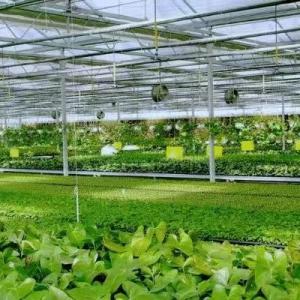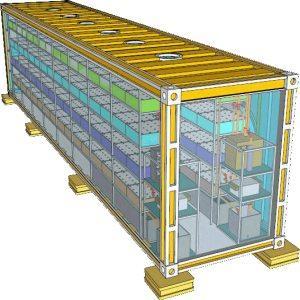China Smart Greenhouse: A "Three-High" Engine for Modern Agricultural Economy
In the process of modern agricultural development, facility agriculture based on greenhouses has become a core carrier for activating the vitality of the agricultural economy, relying on its distinctive characteristics of "high input, high output and high efficiency". By accurately regulating the agricultural production environment, it breaks many restrictions of traditional agriculture and brings multi-dimensional and significant benefits to the agricultural economy, which are specifically reflected in the following four aspects:
I. Breaking Seasonal Restrictions to Realize Year-Round Vegetable Supply
The core advantage of greenhouses lies in their excellent heat preservation and storage capabilities. When the cold outdoor temperatures in winter fail to meet the growth needs of plants, greenhouses can efficiently absorb and retain solar heat through light-transmitting covering materials, creating a stable and suitable internal growth environment. This "off-season production" model completely breaks the seasonal barriers of vegetable cultivation, realizing the transformation from "sowing in spring and harvesting in autumn" to "evergreen throughout the four seasons". It not only ensures the stable supply of fresh vegetables in the market throughout the year, but also frees growers from the constraints of natural seasons, enabling them to obtain continuous production benefits.
II. Building a Safety Barrier for Green and Pollution-Free Products
By creating a relatively closed and exclusive microclimate, greenhouses build a natural "protective shield" for crops. Insect-proof nets installed at the vents can minimize the invasion of external diseases and pests, while effectively reducing damage to crops caused by pollutants such as outdoor dust and smog. In the face of natural disasters like heavy rain, hail and frost, greenhouses play a crucial buffering and protective role, reducing the risk of yield reduction. In such a controllable environment, the use of chemical pesticides can be reduced during the planting process. The final vegetables produced are of high quality, safe and pollution-free, which not only meets the health needs of modern consumers, but also enhances the market competitiveness of agricultural products.
III. Efficient Resource Utilization to Improve Production Quality and Efficiency
Greenhouses are a model of efficient utilization of agricultural resources, especially in the development and utilization of natural solar energy in winter. Their light-transmitting covering materials not only heat up quickly, but also ensure sufficient light. On sunny days, the temperature inside the greenhouse is more than 20℃ higher than that outside, and a temperature difference advantage of 2-3℃ can be maintained at night. This environment perfectly matches the optimal growth temperature requirement of 20-30℃ for most vegetables, enabling high-quality production even in low-temperature seasons. At the same time, the large day-night temperature difference inside the greenhouse can extend the nutrient accumulation period of crops, significantly improving the quality indicators such as sugar content and taste of fruits and vegetables, and greatly increasing the yield compared with open-field cultivation, thus realizing a virtuous cycle of "low energy consumption and high output".
IV. Embracing Intelligent Upgrading to Promote Agricultural Mechanization
With the integration of the Internet of Things (IoT) technology, modern greenhouses have entered a new stage of "smart agriculture". By equipping with intelligent control systems, growers can use terminals such as mobile phones and computers to monitor real-time data including temperature, humidity and soil moisture inside the greenhouse, and remotely and automatically control systems for sunshade, ventilation, irrigation, fertilization and temperature regulation. This mechanized and intelligent management model not only greatly reduces labor input, but also realizes precise control of water, fertilizer and electricity conservation, reducing production energy consumption and costs. It promotes the transformation of traditional labor-intensive agriculture to technology-intensive agriculture, injecting sustainable development momentum into the agricultural economy.
From ensuring people's livelihood supply to enhancing product value, from saving resource costs to promoting industrial upgrading, greenhouses are providing solid support for the development of the agricultural economy with their multiple benefits, and have become an important benchmark for the high-quality development of modern agriculture.





